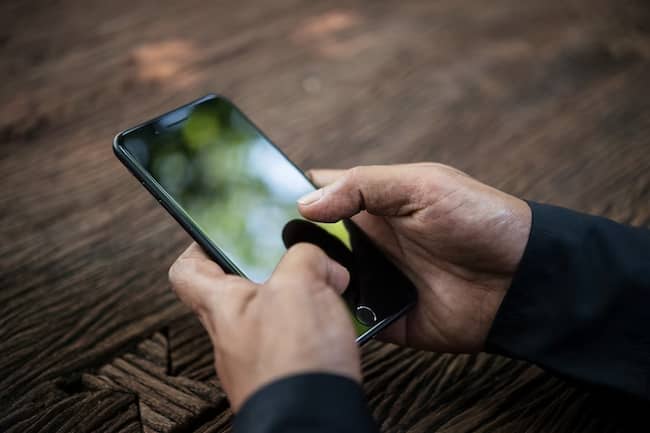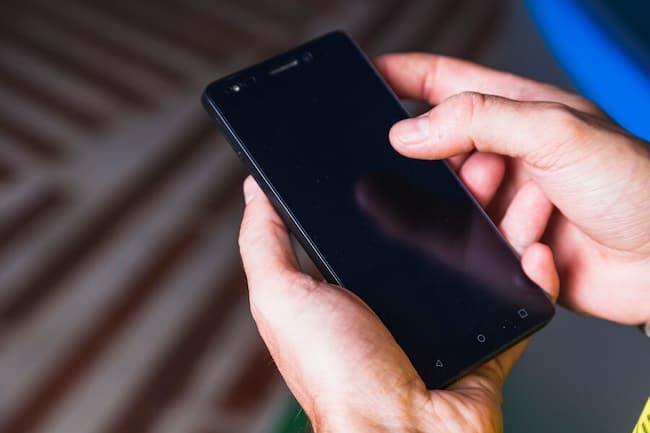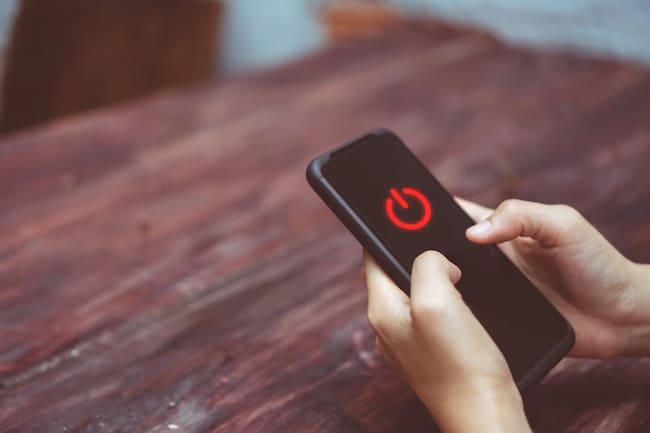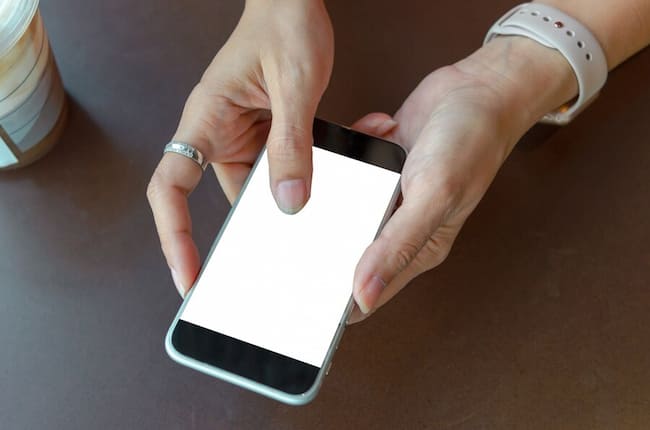When turning off your Android phone, understanding the importance of rebooting your device is crucial.
This section will uncover the significance behind rebooting Android devices and how it can optimize performance and resolve various issues.
So, to ensure a smooth and efficient experience with your Android phone, stay tuned to discover the benefits of rebooting and how it can benefit you.
Key Takeaway:
- Rebooting your Android phone is important for maintaining its performance and resolving software issues.
- Several methods to turn off an Android phone include using the power button, power menu, device options, and forced reboot.
- Suppose your Android phone doesn’t have a functioning power button. In that case, you can use alternative methods such as remapping the power button, accessing the accessibility menu, entering safe mode, using the touch screen, or utilizing Adb commands.
Importance of Rebooting Android Devices
Rebooting Android devices is crucial for their optimum performance. Also, it helps clear temporary files or processes that might slow down the device.
And it resolves software conflicts, improves battery life, and keeps apps and system processes running smoothly.
To turn off an Android phone, there are many methods. One way is to press and hold the power button on the side or top of the device until a menu appears. Then, select either power off or restart from the menu.
Moreover, you can remap the power button, use gesture controls and voice commands, or enter safe mode without using the power button.
Lastly, advanced users can use Adb commands to control their Android phone from a computer and reboot it.
These methods are essential for troubleshooting and maintaining your device’s performance.
Methods to Turn Off an Android Phone
Discover various methods to turn off your Android phone effortlessly.
From rebooting using the power button to utilizing the power menu or device options to even opting for a forced reboot, this section provides a range of solutions to power down your device gracefully.
As we delve into these convenient techniques, say goodbye to the hassle of searching for the right way to shut down your Android phone.
Rebooting using the Power Button
Rebooting an Android device is a must. It helps to fix issues and make the device better. You can do it quickly using the Power Button. Here’s how:
- Press and hold the Power Button, usually on the right side or top.
- Choose the “Restart” or “Reboot” option in the menu.
- Wait for the device to turn off, then on again.
- Your phone should be ready for use.
If you can’t use the Power Button, there are other ways. You can map it to another button or gesture.
Or, go to the Accessibility Menu. Or, try Safe Mode. Or use touch screen gestures. Or, use Adb commands.
Rebooting using the Power Menu
- Press and hold the power button on your Android phone. The power menu should appear.
- Tap “Restart” from the power menu. Your phone will shut down and restart automatically.
- Once it is rebooted, it will be ready.
The power menu to reboot this method is useful for minor software issues or glitches. It lets you restart quickly and easily without complicated procedures.
Rebooting with the power menu is simple. All users can do it, from novices to tech-savvy people.
It is also beneficial for your Android device. Clearing temporary files and processes can keep your device running well and avoid errors.
So, if you have an issue with your Android phone, try the power menu reboot method. It’s a quick and effective solution. If power-off were a game, power menu reboot would be the cheat code!
Rebooting using Device Options
Restarting your Android device without using the power button is easy! Just follow these steps:
- Go to the Settings menu on your phone.
- Scroll down and choose “System.”
- Tap “Advanced” and then select “Restart.”
- A confirmation pop-up will appear. Press “OK” to proceed.
This method helps if the power button isn’t working or is inaccessible. It may be slightly different, depending on your model and version. Look for similar terms like “Restart,” “Reboot,” etc. in your settings menu.
Sometimes, even the best of us need a hard smack to get our acts together.
Rebooting using Forced Reboot
Force rebooting is a great way to restart your Android device if it’s become unresponsive. It can help with various software or hardware issues, giving your phone a fresh start. Here’s how it’s done:
- Press and hold the power and volume down buttons.
- Keep holding until the screen turns off and the device vibrates.
- Release both buttons when it starts vibrating.
- Wait for the device to reboot.
- Your Android phone should be responsive and running properly.
- If it isn’t, other troubleshooting methods may be necessary.
Just remember, a forced reboot won’t erase any data or settings. It’s also not a regular troubleshooting method, so use it only as a last resort. But it’s good to know that you can do it!
I learned this the hard way when my phone froze one day. I tried the power button, but nothing happened.
So, I remembered reading about force rebooting and gave it a try. To my relief, it worked like magic!
Now I use it all the time when my phone won’t cooperate. Why bother with a power button when you can turn off your Android phone in style?
Alternative Methods to Turn Off an Android Phone without Power Button
Several alternative methods exist to turn off your Android phone without using the power button.
From remapping the power button to using the accessibility menu, safe mode, touch screen, or Adb command, this section will explore different approaches that can help you power down your device without relying on the traditional power button.
Say goodbye to the inconvenience of a non-functional power button and discover these handy alternatives.
Remapping the Power Button
Remapping the power button on an Android device is a great way to personalize your experience. You can assign different functions to it, making your life easier. Here’s how:
- Open Settings.
- Scroll down and locate “System” or “System & Device”.
- Tap “Gestures” or “Buttons & Gestures”.
- Select “Power button” or “Side key”.
- Choose the action you’d like to assign – launching a specific app, opening the camera, or toggling a particular setting.
- Save and exit.
There are other ways to turn off your Android without the power button. Try the accessibility menu, safe mode, touch screen options, or Adb commands. Each has its instructions and advantages.
Remapping the power button is a great way to customize your Android experience.
Enjoy one-touch access to your favorite apps and settings! Why rely on physical buttons when you can tap into accessibility magic? Power off your Android with ease.
Using the Accessibility Menu
The Accessibility Menu on Android can be used as a different way to turn off your phone if the power button is not working correctly or is hard to reach. To use it:
- Go to Settings.
- Scroll down and tap “Accessibility” or “Accessibility settings”.
- Look for “Accessibility Menu” and enable it.
- A floating icon with small icons inside should appear on your screen. Tap it.
- A menu with various options will appear, one of them a power button icon. Tap it to turn off your device.
Note: The steps and options in the Accessibility Menu may be different depending on your phone model and software. Refer to the user manual for instructions.
Pro Tip: Familiarize yourself with different ways to power off your Android phone.
Using Safe Mode
Safe Mode is a helpful feature on Android devices. It helps users troubleshoot issues by running the OS with only necessary apps and services.
Enabling Safe Mode makes identifying and fixing problems caused by third-party apps or settings conflicts easier.
Plus, it offers a simplified environment for pinpointing the source of the problem.
To use Safe Mode on an Android phone:
- Press and hold the power button. A power menu will appear.
- Tap and hold the “Power off” option.
- A pop-up window will appear. Select “OK” to reboot in Safe Mode.
- Your device will restart with a text label at the screen’s bottom left corner. Essential system apps and services will be active, while third-party apps will be disabled.
Test your device’s performance in Safe Mode. If your device functions normally, an installed app or setting is likely causing the issue. To exit Safe Mode, restart your phone.
Safe Mode is a great way to troubleshoot software-related problems on Android devices.
It eliminates temporary system glitches caused by recently installed apps or updates. With this technique, users can maintain optimal performance and stability of their Android devices.
Using the Touch Screen
If the power button isn’t working, there are other ways to switch off an Android phone with the touch screen. Here’s a step-by-step guide:
- Find and open Settings.
- Scroll down and tap ‘System’.
- Look for ‘Power’ or ‘Battery’.
- Tap ‘Power Off’ or ‘Shutdown’.
- Confirm by tapping ‘OK’.
Other options are available, too, such as remapping the power button to another part of the screen, entering Safe Mode via touch gestures, using Adb commands through a computer, or using apps designed for accessibility.
These methods allow users to switch off their phones via the touch screen, even if they have trouble with the power button or special accessibility needs.
Using Adb Command
Utilize the Adb (Android Debug Bridge) command to turn off an Android phone with four simple steps:
- Connect your device to a computer with a USB cable.
- Open a terminal/command prompt on your computer and navigate to the Adb tool directory.
- Enter “
adb devices” to check if your device is recognized. - Type “
adb shell reboot -p” to initiate a shutdown.
This provides an alternative to relying on physical buttons or menu options. With Adb commands, users can power down their devices when other methods are inaccessible.
Adb commands are great for malfunctioning buttons or limited access. Connect your device and use the Adb tool to execute remote commands.
This is useful for troubleshooting or when physical interactions are not possible.
In addition to Adb commands, remapping the power button, utilizing the accessibility menu, entering safe mode, and using the touch screen are other alternative options for powering down an Android device.
Understand these techniques to control your device even without traditional shutting-down methods effectively.
Additional Articles on Similar Topics
Android phones come with a wealth of info to help users. These extra articles cover different subjects, giving users knowledge and understanding.
By studying these articles, users can learn how to customize their phone. For example, they can change wallpapers and themes or customize app icons and fonts.
These additional articles also look into improving battery life. As many Android users know, battery drain is a common issue.
The articles provide tips and techniques to optimize battery use, like adjusting screen brightness, managing background apps, and utilizing battery-saving modes.
Finally, these articles discuss maximizing storage space on an Android phone. It is easy to run out of space.
The articles provide strategies to free up space, like deleting unnecessary files, clearing app caches, using cloud storage, and optimizing storage settings.
It is important to remember that these extra articles provide more than what is already known.
By reading these, users can better understand the topics related to their Android phones so they can make informed decisions and use the phone to its full potential.
Experts in Android technology created these articles. They did research and analysis to make these comprehensive and informative articles.
Using their expertise, users can get guidance and solutions to improve their phone experience.
Conclusion
To turn off your Android phone, follow these steps:
- Locate the power button.
- Press and hold it until the power menu appears.
- Choose “Power off” from the menu.
- Tap “OK” to confirm.
- Your phone will then shut down.
If the power button method doesn’t work, try these other options:
- Check the settings menu for a “Power off” software option.
- You can also try simultaneously pressing and holding the volume down and power buttons.
- Try these alternatives if needed!
Some Facts About How to Turn Off Your Android Phone:
- ✅ There are two methods to turn off an Android device: a normal power-off and a forced reboot. (Source: Team Research)
- ✅ For a normal power off, press the “Power” button to wake the device, then press and hold it to open the Device Options dialog. (Source: Team Research)
- ✅ In the Device Options dialog, tap “Power Off” to shut down the device and hold the power button to power up again. (Source: Team Research)
- ✅ If the device is unresponsive, a forced reboot can be done by pressing and holding the “Power” button and the “Volume Up” button. (Source: Team Research)
- ✅ Various alternative methods are available to turn off an Android phone without the power button, such as using ADB commands, the Android Accessibility Menu, or specific apps. (Source: Technastic.com, Android Authority)
FAQs about How To Turn Off Your Android Phone
How do I turn off my Android phone using the power button?
To turn off your Android phone, use the power button:
- Press the “Power” button to wake the device from sleep mode.
- Press the “Power” button to open the Device Options dialog.
- In the dialog window, tap “Power Off,” and the device will shut down.
What should I do if the power button on my Android phone is not working?
If the power button on your Android phone is not working, you can try these methods:
- Use ADB commands on a laptop or PC with USB debugging enabled.
- Access the Android Accessibility Menu for quick access to the Power Off menu.
- Install apps from the Google Play Store to turn off and restart your device without the power button.
- Use the Power Menu icon on the Quick Settings screen or utilize Bixby voice commands on Samsung devices.
- Schedule the power-off time via device settings.
How can I turn off my Android phone without using the power button or volume buttons?
To turn off your Android phone without using the power button or volume buttons:
- Use ADB commands on a laptop or PC with USB debugging enabled.
- Access the Android Accessibility Menu for quick access to the Power Off menu.
- Install apps from the Google Play Store that offer options to turn off and restart your device.
How do I remap the power button on my Samsung Galaxy phone?
To remap the power button on your Samsung Galaxy phone:
- Go to Settings.
- Select Advanced features.
- Choose the Side key.
- Select “Power off menu” under Press and hold.
How do I remap the power button on my Google Pixel phone?
To remap the power button on your Google Pixel phone:
- Go to Settings.
- Select System.
- Choose Gestures.
- Toggle off “Hold for Assistant” under the Press and Hold power button.
How do I remap the power button on my Motorola phone?
To remap the power button on your Motorola phone:
- Go to Settings.
- Select System.
- Choose Gestures.
- Customization options for the power button can be found here.
Table of Contents




